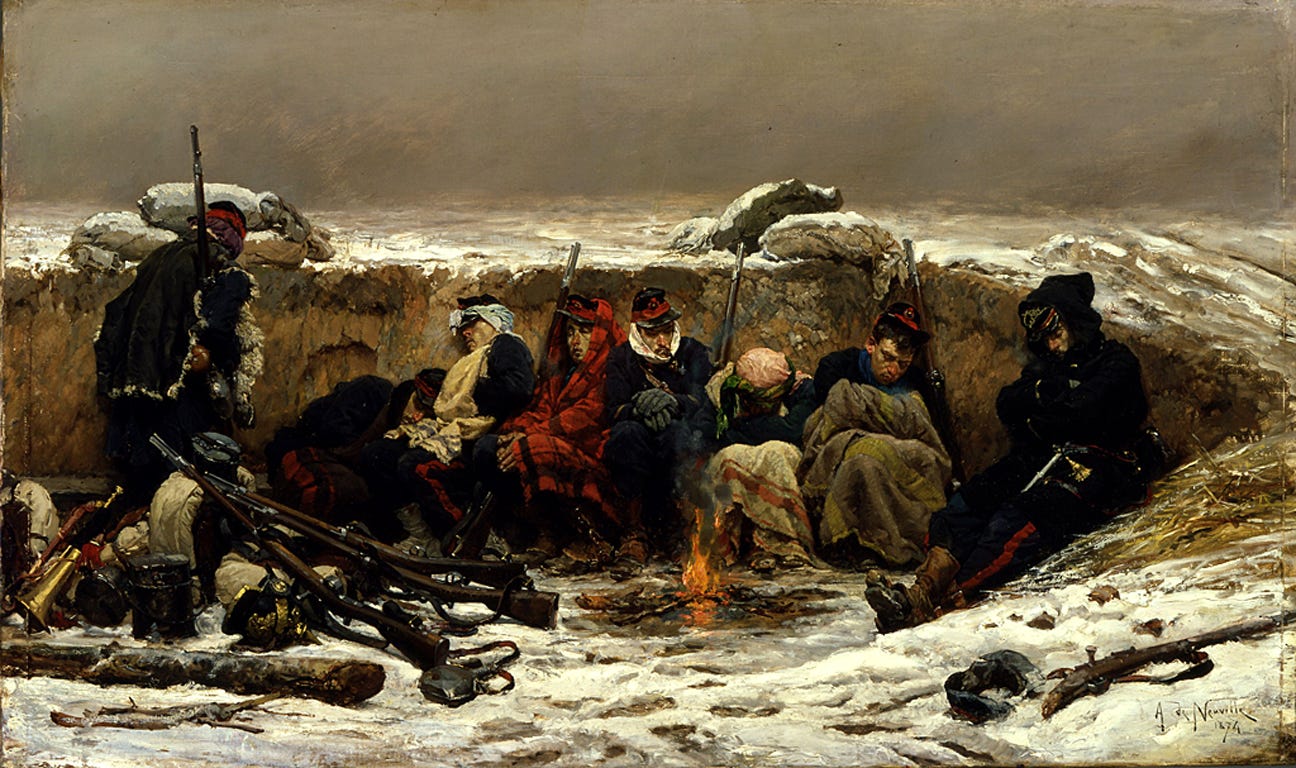The Art Of Life Under Siege At Christmas-Time
Paris in the winter of defeat, 1870-71
Alphonse de Neuville served in the French Navy and saw the face of war in person. In the Trenches is one of his works related to the Franco-Prussian War of 1870-1871, and one of his best paintings ever, in this author’s opinion. Melancholy, suffering, endurance, dim hopes in the doldrums of winter — this sad snapshot of Paris under siege still has all t…



